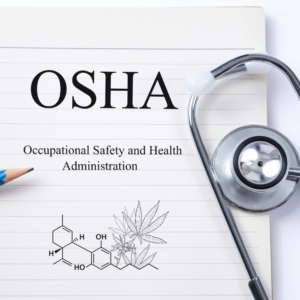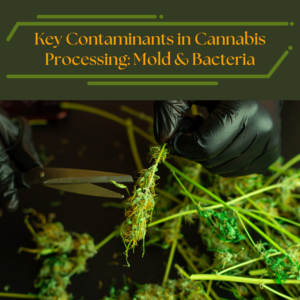Cannabis: OSHA Violations, Safe Cities, & Gas Detection Issues

As the cannabis industry grows rapidly across the United States, so does the need for effective safety regulations and compliance. The U.S. Occupational Safety and Health Administration (OSHA) plays a critical role in maintaining workplace safety standards, which are essential for the well-being of employees working in cannabis cultivation, processing, and manufacturing facilities. Yet, OSHA violations, gas detection challenges, and variations in safety standards across cities and states present significant obstacles to creating a universally safe cannabis industry.
This article explores the implications of OSHA violations in the cannabis sector, highlights cities with commendable safety practices, and discusses the crucial need for proper gas detection to prevent workplace hazards.
OSHA and the Cannabis Industry
The Occupational Safety and Health Administration (OSHA) was established to ensure that all U.S. workplaces adhere to specific health and safety guidelines. The cannabis industry, like other agricultural and manufacturing sectors, must comply with OSHA standards to provide safe working conditions. However, cannabis facilities often experience compliance issues, resulting in OSHA violations that put workers at risk and threaten the reputation of cannabis businesses.
Common OSHA Violations in Cannabis Facilities
Cannabis production facilities can face OSHA violations due to a variety of hazards, including improper chemical storage, inadequate ventilation, and unsafe handling of equipment. Here are some of the most frequent OSHA violations in the cannabis sector:
Inadequate Personal Protective Equipment (PPE)
Workers in cannabis facilities may be exposed to various chemicals, including pesticides, fertilizers, and solvents. Failure to provide adequate PPE, such as gloves, goggles, and respirators, is a common OSHA violation that places workers at risk of exposure to harmful substances.
Improper Storage of Chemicals
Cannabis cultivation often requires the use of chemicals like pesticides and fertilizers, which must be stored according to OSHA and Environmental Protection Agency (EPA) guidelines. Improper storage can lead to chemical spills, fires, and toxic exposure risks.
Lack of Proper Ventilation and Air Quality Control
Cannabis processing facilities frequently use solvents like butane and ethanol in extraction processes, which can emit harmful fumes. Without proper ventilation and gas detection, these fumes can accumulate, posing a fire hazard and threatening workers’ health.
Electrical and Equipment Hazards
Cannabis facilities require advanced equipment for processing, which can lead to electrical hazards if not installed or maintained properly. OSHA has cited numerous facilities for electrical violations, including improper wiring and inadequate grounding.
Inadequate Emergency Preparedness
Many cannabis facilities lack sufficient emergency plans or training for employees. OSHA requires that businesses have evacuation plans, fire extinguishers, and emergency procedures in place to protect employees in case of a fire or chemical spill.
These violations often stem from the rapid growth of the cannabis industry and the lack of standardized training programs tailored to cannabis-specific workplace hazards. Compliance challenges can lead to fines, shutdowns, and reputational damage for cannabis companies, making it essential for these businesses to prioritize OSHA compliance.
Safe Cities for Cannabis Production
While OSHA regulations are national, each state—and sometimes even individual cities—can establish additional workplace safety standards. Some cities have emerged as leaders in ensuring safe practices for cannabis workers by enforcing stringent safety protocols and providing industry support for compliance. Here are a few cities recognized for their commitment to safe cannabis production practices:
Denver, Colorado
Denver was one of the first cities to establish a regulated cannabis market, and it has consistently set high standards for safety. The city mandates strict zoning laws, ensuring that cannabis operations are conducted in safe, secure locations. Denver also has specific requirements for air quality control in indoor cultivation facilities, helping reduce workers’ exposure to mold, bacteria, and harmful chemicals. The city collaborates with OSHA and local health departments to provide cannabis companies with training resources focused on safety.
Portland, Oregon
Portland has gained a reputation as a safe city for cannabis workers, with proactive policies designed to address industry-specific hazards. The city requires that cannabis facilities implement robust ventilation systems and adhere to strict fire safety codes. Portland’s local government also offers grants and tax incentives to cannabis companies that prioritize worker safety by investing in safety training, PPE, and facility upgrades.
Oakland, California
Oakland has taken steps to make its cannabis industry safe and sustainable. Known for its supportive cannabis policies, Oakland provides regular inspections of cultivation and processing facilities to ensure compliance with OSHA standards. The city also offers support programs for small cannabis businesses to access the resources they need to maintain safe workplaces, including grants for equipment upgrades and employee training in workplace safety.
Seattle, Washington
Seattle’s cannabis industry is heavily regulated, with a strong emphasis on worker safety. The city has strict requirements for gas detection and air quality monitoring, particularly in extraction facilities where flammable gases are used. Seattle’s focus on fire prevention and chemical safety has made it a model city for cannabis workplace safety, with local agencies partnering with OSHA to provide industry-specific training.
These cities demonstrate that with the right policies and community support, it is possible to create safer working environments in the cannabis industry. Cannabis businesses operating in these cities benefit from a lower risk of OSHA violations and often enjoy higher employee satisfaction and productivity.
Gas Detection Issues in Cannabis Facilities
One of the most pressing safety concerns in cannabis production is the presence of hazardous gases, particularly in extraction and processing facilities where volatile solvents are used. Inadequate gas detection measures can lead to fires, explosions, and harmful exposure for workers, making gas detection a crucial aspect of cannabis workplace safety.
Common Hazardous Gases in Cannabis Facilities
Butane: Commonly used in cannabis extraction, butane is highly flammable and can cause explosions if not handled properly. Proper gas detection is essential in facilities using butane to prevent accumulation of this gas.
Ethanol: Often used as an extraction solvent, ethanol is both flammable and toxic. High ethanol concentrations in the air can cause respiratory issues and increase the risk of fire.
Carbon Dioxide (CO2): In some cultivation facilities, CO2 is used to enhance plant growth. However, CO2 levels must be carefully monitored, as high concentrations can be dangerous and lead to respiratory distress in workers.
The Importance of Gas Detection Systems
A reliable gas detection system is critical for any cannabis facility using or producing potentially hazardous gases. Gas detection systems monitor air quality and alert workers if gas levels exceed safe limits. They play an essential role in preventing health risks and catastrophic accidents.
Challenges in Implementing Gas Detection
Implementing effective gas detection in cannabis facilities can be challenging due to the following reasons:
Cost of Gas Detection Systems
High-quality gas detection systems can be expensive, which may be a barrier for smaller cannabis businesses. Despite the cost, investing in a robust gas detection system is essential for worker safety.
Lack of Industry-Specific Standards
The cannabis industry lacks uniform standards for gas detection, leaving companies to determine the appropriate systems for their facilities. This often results in inconsistent practices and inadequate gas monitoring.
Maintenance and Calibration Requirements
Gas detection systems require regular maintenance and calibration to function properly. In cannabis facilities with limited resources, ensuring that detection systems are regularly checked can be difficult, increasing the risk of malfunction.
Best Practices for Gas Detection in Cannabis Facilities
To protect workers and maintain OSHA compliance, cannabis companies can follow best practices for gas detection:
Invest in High-Quality Gas Detection Systems
While initial costs can be high, investing in advanced gas detection systems is critical for preventing serious safety incidents. Portable and fixed gas detectors should be used in all areas where hazardous gases may be present.
Conduct Routine Inspections and Maintenance
Regular inspections of gas detection systems help ensure they are operating correctly. Scheduled maintenance and calibration are essential to prevent sensor failure and ensure accurate readings.
Train Employees in Gas Safety Protocols
All employees should be trained in gas safety, including how to use gas detection equipment, recognize gas leak symptoms, and respond in case of an alarm. Training reduces response times and can prevent accidents.
Develop an Emergency Plan
Facilities should have an emergency plan in place for gas leaks, including designated evacuation routes, emergency shut-off procedures, and medical assistance protocols. An emergency plan can save lives and minimize damage in the event of a gas leak.
The Role of Compliance in Ensuring Worker Safety
OSHA compliance is more than just meeting regulatory requirements—it’s about creating a safe and productive environment for employees. When cannabis companies invest in safety protocols, including gas detection, proper ventilation, and PPE, they reduce the likelihood of accidents and health risks, protect their workforce, and ultimately enhance the industry’s credibility.
By adhering to OSHA standards and learning from cities that excel in workplace safety, the cannabis industry can continue to grow responsibly. However, as the industry evolves, it is crucial to establish more tailored safety standards that address the specific hazards of cannabis cultivation, processing, and extraction.
Building a Safer Future for the Cannabis Industry
The cannabis industry’s rapid growth presents unique safety challenges that require attention to OSHA compliance, safe practices, and gas detection protocols. With cities like Denver, Portland, Oakland, and Seattle leading the way, there is a clear path toward safer cannabis workplaces. By prioritizing worker safety, investing in gas detection systems, and adhering to best practices, cannabis businesses can protect their employees and set a higher standard for the industry.
As regulations evolve and more states legalize cannabis, continued efforts to refine safety standards will be essential for long-term success. A proactive approach to safety not only protects workers but also fosters a sustainable, reliable, and reputable cannabis industry.











